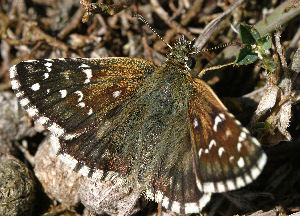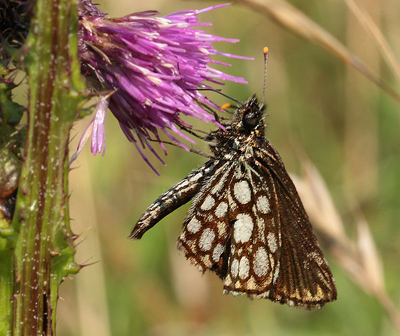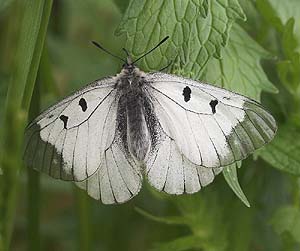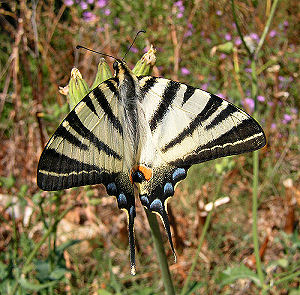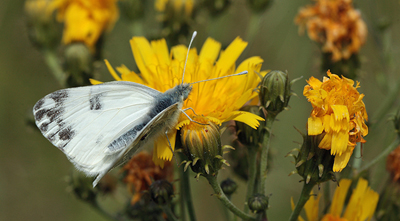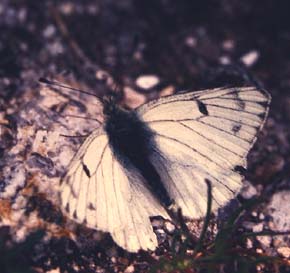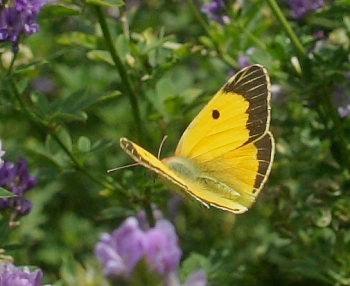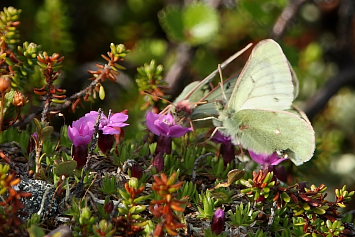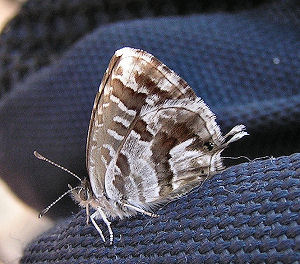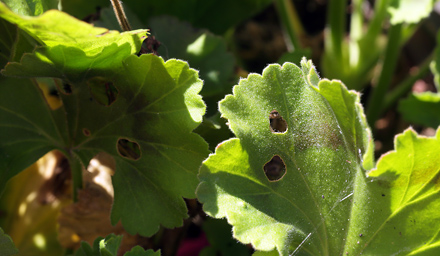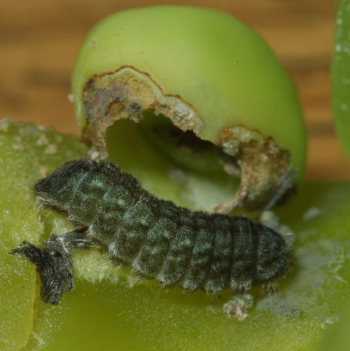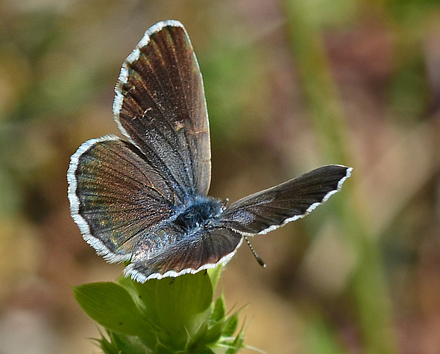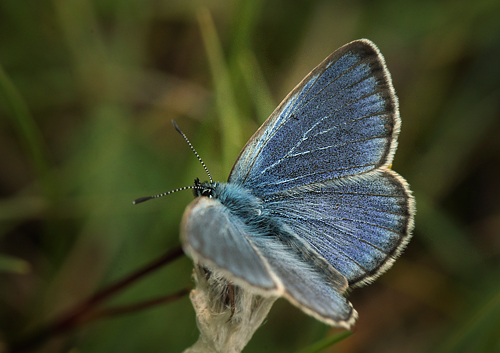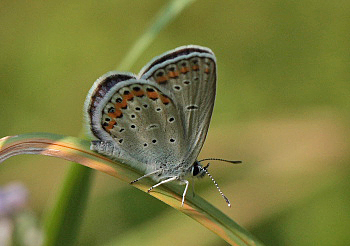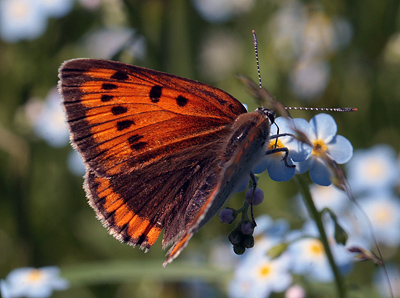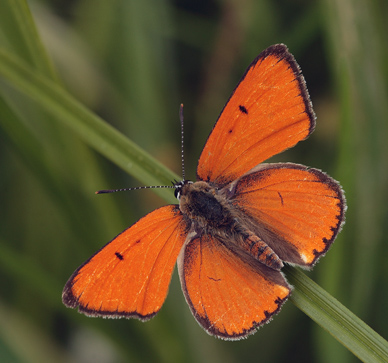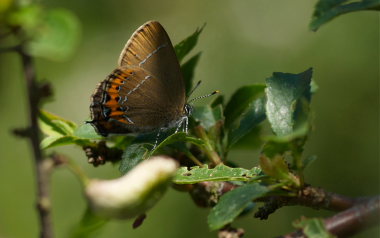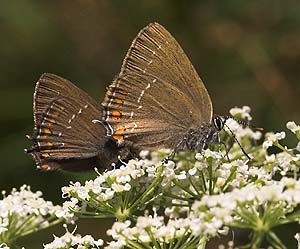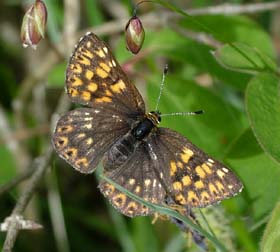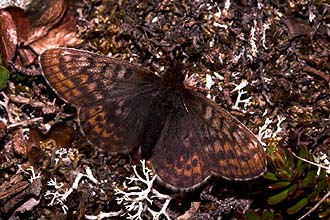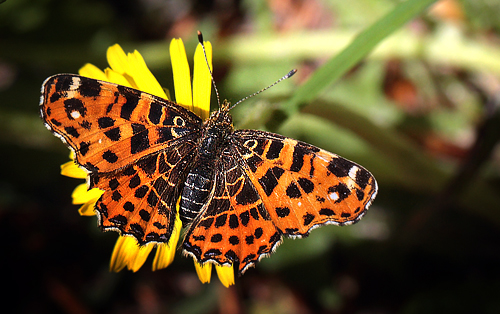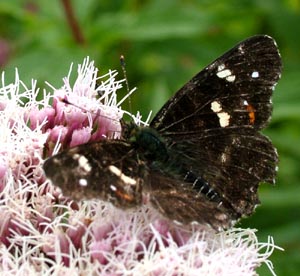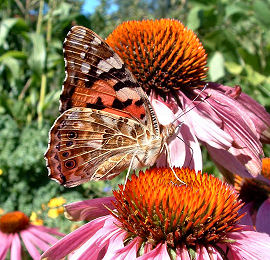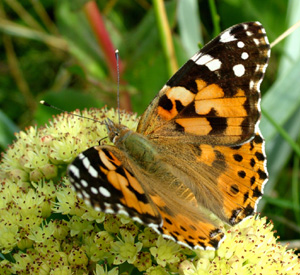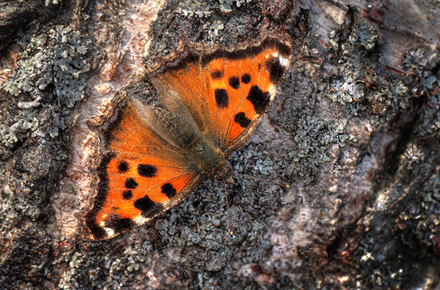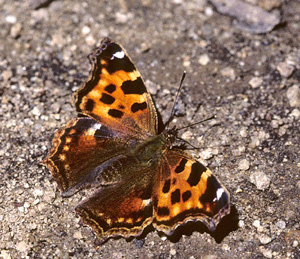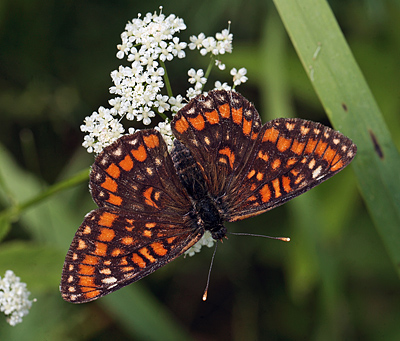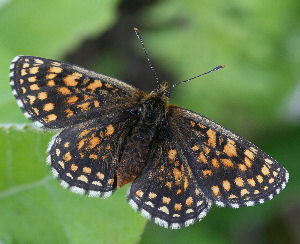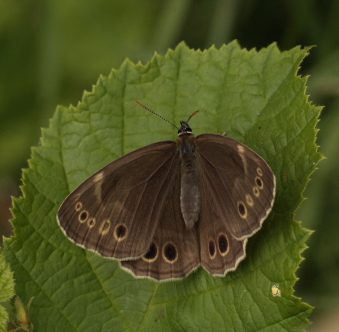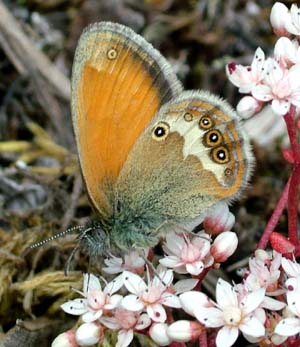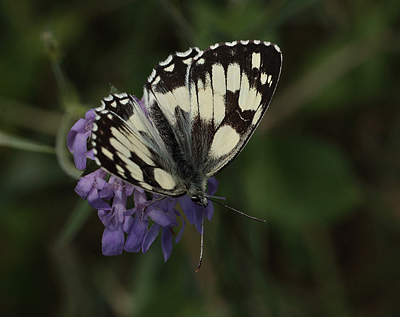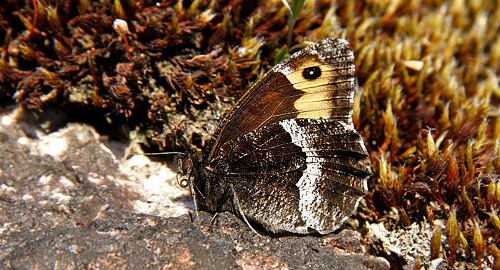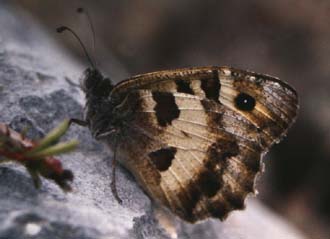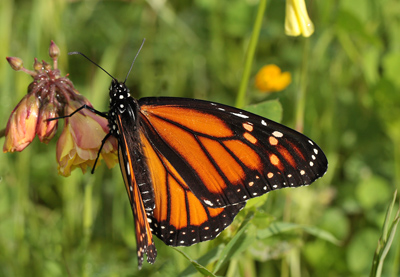| Butterflies are rare, immigrants or extinct in Scandinavia |
| (Sweden - Norway & Finland) |
first update d. 19 January 2014
last update d. 5 January 2023
Rare butterflies species in Scandinavia Oberthur's Grizzled Skipper, Pyrgus armoricanus there are in the south of Sweden in Skåne small populations along the eastern coast and in Fyledalen. In recent years, due to the warmer climate, it seems that Oberthur's Grizzled Skipper is expanding to new locality in Skåne. Also some small populations in western Zealand in Denmark. Large Grizzled Skipper, Pyrgus alveus is found in Norway, Sweden and Finland. In Norway, in Jotunheimen mountains located in the rainshadow where its populations are stable. In Sweden, the pressures of modern agriculture. Grazing land is removed, on the other hand there comes large monoculture field wiht fodderplants instead which does not provide room for the nature flora and fauna. Has previously been common in Smaland, but has largely disappeared. Available only a few localities in Sweden as in Medelpad, Ångermanland and Gotland. In southern Finland is also rapidly declining. Large Chequered Skipper, Heteropterus morpheus in Sweden, found once in Gislöv, south-west Skåne 1951. And in Finland, found in Nyland, Esbo 1937. n Denmark is re-colonized in 2010, now there are two populations In eastern Falster. Apollo, Parnassius apollo In Norway are in Jotunheimen mountains rain shadow, where there is still stable populations. Otherwise, the about to disappear in southern Norway, Swedish archipelago along the Kattegat, and Swedish archipelago along the Baltic Sea. Gotland, Aland Islands and southern Finland. It is the pressure of modern agriculture and urbanization. Are protected throughout Europe. Clouded Apollo, Parnassius mnemosyne In western Norway's fjords in the rainshadow of the mountains found in Møre-Romsdal, Sogn og Fjordane. In Sweden, there are only small isolated populations in Blekinge and the middle Upplands coast. The strongest populations are Medelpad, on Alnö and at Tynderö. In Finland, it seems that few populations on the Åland Islands, Åbo archipelago, Raumo and a simple inland location in Tavastland. In Denmark last seen in 1961†. Scarce Swallowtail, Iphiclides podalirius in Sweden, found at Lappkärrsberget, Museum of Natural History (Uppland) Stockholm 15th August 2013. Eastern Bath White, Pontia edusa in Denmark and Sweden seen as rare passage migrant in hot August days, can breed in mustard fields and construction sites around. In 2002 and 2011 there was a great migration in southeastern Denmark, where they succeeded in establishing colonies where next year the early summer could see a few newly hatched individuals. There are in Sweden on Gotland a stable population, as if the locality is a dried lake with limestone soil, where it uses Wild Mignonette, Reseda lutea. Small Bath White, Pontia chloridice taken in southern Finland with a small migration of Eastern Bath White in July/August 1970. We found approx. 15 individuals, mostly females. Peak White, Pontia callidice is encountered in a single butterfly in July 2004 Karigasniemi in Finnish Lappland together with a large immigration of Black Veined White as never before has been found at these latitudes. Pale Clouded Yellow, Colias hyale is a migrate south in Denmark and southern Sweden, found in lucerne and clover fields, is a rapid flying, soon to flower, however late in the day more calm. The male is known to the yellow in flight, the female is yellow-white. In 2009 there was a great migration in southeastern Denmark. It seems in Sweden that it can survive the winter on Öland, so there are established populations. In Finland shows that regular migration in the south. Never found in Norway. Clouded Yellow, Colias crocea seen as rare passage migrant in hot August days, can breed in lucerne fields around the southeastern Denmark and Sweden. Since 2000, almost every year has been higher level of immigration in Denmark. In Finland shows that immigration almost every year. And rare immigration in the southern Norwegian archipelago. Pale Arctic Clouded Yellow, Colias tyche werdandi habitats in the Swedish mountain world restricted to the area of the Lycksele Lappmark to Torne Lappmark. In Norway you can find populations from northern Nordland to inner Troms. In Finland only in the mountains around Kilpisjärvi. It has for several years been affected by reindeer grazing intensity, and the warmer climate makes it even better. The move higher into the mountains where the climate is harder on it. Arctic Clouded Yellow, Colias hecla populations occurs through the mountain range of the Lycksele Lappmark to Pältsa in Torne Lappmark. In Norway occurs on of the southern Nordland to inner Troms and east to northern Finnmark. In Finland it is found in the mountains around Kilpisjärvi and on low-lying sandy fields along the border river Tana against Norway. The butterfly disappears when reindeer grazing pressure is too high, it is seen in Finland where for many years was gone. It is also influenced by the warmer climate that makes it higher up in the mountains. Found cirkupolar north of the Arctic Circle on through Siberia, northern Canada and Greenland. Geranium Bronze, Cacyreus marshalli is found in the Swedish archipelago; Adolfsberg, Närke 4th September 2010 near Stockholm, and at a Årstabergs train station in Stockholm 17th May 2013. Is found in Denmark on 11th July 2011 at Bøtø Dige, Falster by Klaus Hermansen. A larval gnawing and larval is found in Aarhus V, Jutland by Svend Kaaber 25th August 2013. Is a South African who was introduced to Mallorca with a lot Geraniums to horticulture in 1987, since it has spread all over the island. In 1991 it was found in a garden in Brussels, Belgium, in 1992 it was found in Spain, in Rome, Italy in 1996 and the South of France 1997, Sussex, England 1997. It is under observation status in Denmark because every year in neighboring countries are found in the open air in the gardens of geraniums. Long-Tailed Blue, Lampides boeticus (Linnaeus, 1767) found in temperate regions of the world. Can fly from southern Europe with Germany and England. Often seen flying in lucerne/alfalfa fields, and can be found as a pest of cultivated peas. Found in Denmark and Sweden since March 2006 in some imported peas from Kenya. Later many finds in mangetout peas from the Coop Supermarked like Kvivkly and Brugsen also in 2012. It is in Denmark under observation status because each year in neighboring countries are found as from England where it may have established themselves. Short-Tailed Blue, Cupido argiades immigrant in southern Finland, where the periods settle to form populations. Seen also as a rare migrant in the Swedish archipelago along the Baltic Sea and on Gotland. It is strange it has not yet been found in Denmark? Provençal Short-Tailed Blue, Cupido alcetas has in Scandinavia immigrated one time in Finland in July 1974. Eastern Baton Blue, Pseudophilotes vicrama has in Scandinavia only found in southern Finland, where it is located along the wide Salpausselkä Ås which was formed during the ice age melt stagnation period. Butterfly's spread has decreased sharply since the 70s, and from that had been widespread in the interior parts of southern Finland are now the only locality in Satakunta and possibly in the Savolax district. Chequered Blue, Scolitantides orion has been widespread along a narrow belt in the east - west direction paraelt with the large central Swedish moraines to Salpausselkä Ridge in Finland, which developed during inland ice melt stagnation period. The species occurs on bare rock surfaces there is the pole of the sea. The glacial influenced belt stretching from Aust-Agder to Østfold in Norway and beyond in Sweden through Bohuslän, Dalsland, Västergötland (both Väneren and Vättern), Östergötland, Södermanland and Uppland. And from Turku to Karelia in Finland and on through the Russian Karelia. The species has since the 70s decreased strongly in all three Nordic countries because of habitat grows trees in thickets, or become urbanized, it is often atraktive land for holiday homes close to the sea in the archipelago. And now you are the only 2 to 4 localities in the respective countries. Large Blue, Maculinea arion has the Swedish previously been widespread from Skåne to Värmland and northern Uppland. Today it is just fairly widespread in Öland and Gotland. And from Skåne to Uppland there are only a few localities left where it exists. It has never been found in Norway, Finland has few localities left in the Southeast. Are in Denmark now only back on Høvbleget, Møn where there is a nature conservation of the hilly grassland, concerning the population of Large Blue and orchids. Alcon Blue, Maculinea alcon located in Sweden from Skåne, Halland through the southwestern Västergötland and Bohuslän. It has decreased strongly in the heavily populated areas in Skåne and Göteborg area. In Denmark, the southern and western Jutland and Læsø. Reverdin's Blue, Plebejus argyrognomon the blue species is considered to be a relict occurence in Scandinavia where it has small populations in Norway and Sweden. In Norway, where it is found in the Oslo Fjord, the nearly extinct since 2013 seeks to breed and reintroduces it in a secret location on an island in the Oslo fjord. In Sweden it has been local common in eastern Småland and south-eastern Östergötland. And today there are only a few localities where it is close to disappearing. It is protected in Norway and Sweden. Silvery Argus, Aricia nicias There has recently found a population in southeastern Norway close to the Swedish border, where it occurs from northern midlands Jämtland and Ångermanland and north of Bottenviken across the border to Finland in the Österbotten, Tavastland to Northern Savo, Kajanaland and Finnish Karelia. Because of modern agriculture disappears populations, and it is almost only along country roadsides weighed it exists today. And areas with traditional agriculture with grazing and haying. Large Copper, Lycaena dispar migrated into southern Finland in the Finnish Karelia 1972, and in 1990s expanded it's territory westward along the Finnish Viken, from Imatratrakten to Tammisaari. Extinct in Denmark. Only known from a single location in Denmark, Horreby Lyng in Falster, where the species was first seen in 1934 and was the site until 1955†. Black Hairstreak, Satyrium pruni found in Sweden from Skåne, Blekinge, eastern Småland and Öland. Has the warmer climate expanded to Östergötland. Found widespread in southern Finland. Is never found in Norway. In Denmark seen in Toreby Skov, Lolland, in 1995. Ilex Hairstreak, Satyrium ilicis found in Scandinavia only in Sweden from Skåne, Blekinge and recently found in Nybro municipality in 2003. Have previously found in Denmark, where it was the Jutland small oakforest character species. Last seen in Hvidding Krat, 1992† between Viborg and Randers. Duke of Burgundy Fritillary, Hamearis lucina its habitats are deciduous forest meadows, a special habitat where the old application running on creating the right conditions for it where primroses had good growing conditions, it was especially the older plants the larva of Duke of Burgundy Fritillary preferred. Found in Scandinavia currently only in Sweden where it was previously in Skåne. Now it is found in south-eastern Småland, Östergötland and Öland. Previously existed in Denmark in Zealand, where it was last seen in Allindelille Fredskov 1960†. Pallas's Fritillary, Argynnis
laodice
Is in modern times with the warmer climate
established populations in southern Finland. Titania's Fritillary, Boloria titania found in southern finland scattered populations in Turku to Hämeenlinna, north of Ladoga and Onega. In Estonia and northern Latvia is widespread. Polar Fritillary, Boloria polaris occur north of 68 ° N from the north banks of Torneträsk thorns Lappmark in Sweden. Pallastunturi in Muonio, Finland and north in Norway to inner Troms and Finnmark that it exists east of the Varanger peninsula. It avoids the coastal habitats. Located further through Siberia, northern Canada to northern and eastern Greenland. Dusky-winged Fritillary, Boloria improba found in northern Sweden in the high mountains around Torneträsk, Torne Lappmark over the Norwegian border to the mountains south of Bardu, Troms and east to the mountains Påltsa cross the border in northern Finland to Kilpisjärvi. Isolated is an occurence of a mountain Tjäksa in southern Pite Lappmark, Sweden. Is threatened by the warmer climate which presses the butterfly higher in the more windblown habitats. Are also in Arctic Russia on Novaya Zemjla island and beyond in eastern Siberia. On to the North America in the Arctic Alaska to Colorado and Baffin Island in the northeastern part of Canada. European Map, Araschnia levana back in 1881 found for the first time in Denmark in Kohave Skov on the island of Falster. Later in the 1930s it began to spread to the Roden forest and many other forests in Lolland and Falster. In 1938, it found Knudsskov in southern Zealand. On Funen was first seen in 1947, and at Langeland in 1949. It is a heat-loving species as if conditions have improved in the last 20 years of warmer climate. Now it is now widely used in several places in eastern Jutland up to Himmerland, Djursland, Samsø Funen, Langeland, West / North Zealand and Amager. In southern Sweden, Skåne reported in 1982. Now it spreads itself east and north to Blekinge, Smaland and southern Halland. Is recently come to Finland 1973, where it is expanding rapidly. Red Admiral, Vanessa atalanta seen as normal migratory guest in Denmark and southern Scandinavia. The first arriving in May, and they reproduce in Denmark, which hatch from July to August. In autumn they fly south to the countries around the Mediterranean Sea, where the mild winter months, no freezing. In warm winter months as 2006/2007, the through the winter in Denmark. Where on sunny days can be seen on træes stems where they enjoy the low winter sun. Painted Lady, Vanessa cardui viewed in Denmark as regular immigrants from the south, with varying frequency, in 2003, 2006 and 2009, the common everywhere. They are seen flying as high up as in Lapland and northern Norway. In 2011 and 2012 there were only small immigration in Denmark. In 2013 there was a normal migration in southeastern Denmark. In autumn they fly south down to the Mediterranean region and northwestern Africa in the Atlas mountains valleys. Scarce Tortoiseshell, Nymphalis xanthomelas Have in Sweden since 2003, established populations in Blekinge, Småland, Östergötland, Öland and Gotland. As well as populations in southern Finland. Is seen as a rare visitor in eastern Denmark since 2003 and 2004, last seen in 2011, 2012 & 2013. Similar to be confused Large Tortoiseshell where Scarce Tortoiseshell has more jagged blade shape and cleaner red base color on top. Wider Black hem that is less sharply defined inward. As well as brighter yellow hairy legs, which can be seen when you are close enough! Its feed plant is Elm and Willow. Large Tortoiseshell, Nymphalis polychloros have in Sweden stable populations along the coast and slightly inland in the south up to Bohuslän and southeastern Norway. But in a rainy years it disappeared from Norway and Bohuslän. Today, the most stable populations in the east Sweden; Blekinge, Småland and Öland. And in southern Finland. In Denmark seen as rare migrating from Sweden during hot summers. Previously, the permanent in eastern Denmark, where it lived in the many cherry plantations in North Zealand, Falster and Lolland, but disappeared in the 80s †. False Comma, Nymphalis vaualbum is found in Finland in the Finnish Karelia 2004. Previously, in Finland found 35 pcs. from 1897 to 1985. In Sweden, found 3 pcs. in Skåne 1906. Uppland 1913 and Småland 1914. There is in Denmark known from 4 pcs. found at two locations, respectively Copenhagen, Zealand and Sønderby on Funen, all are from 1901. Seen as rare immigrant in eastern Poland, Romania and Hungary. It's an invasion species with meta-populations east of the Ural Mountains in Russia. Looks like a little Comma, just a little bigger! See the link. Scarce Fritillary, Euphydryas maturna is close to extinct in Sweden. Available only back in southwestern Västmanland and Uppland. In Finland, the local common in the southern and eastern part up to 64 ° N. In Denmark, known two specimens from Rosningen Skov on the northwest Lolland approx. 1890 caught by E. Skafte. That there are two specimens indicates that it has been the last remnants of a population in Denmark, but we will probably not know for sure today? It existed until 1950 widespread in Schleswig, northern Germany. Assmann's Fritillary, Melitaea
britomartis available in Sweden a few
populations left in Västmanland, Östergötland
and northern Småland nearly extinct. It has
always been local but has been more widespread
and numerous. Because of human intenciferet field
use and changing agricultural practices have
species in less time than 20 years shrunk to a
few populations on a few hectares field. |
|
White
Admiral,
Limenitis camilla located in southern Sweden as an
immigrant in the 50s
established permanent populations in Skåne, but
the cool rainy years in the 60s caused it to disappear again. Purple Emperor, Apatura
iris was found in
Sweden for the first time in 1981 on Stärnö, Blekinge. Found now
in southern Sweden as an immigrant who in 1983 established permanent populations
in Skåne. Since then it has spread to Halland,
Blekinge, Smaland and Oland. t Lesser Purple Emperor, Apatura
ilia are permanently
populations in southern Finland, where in 2004 it began
to spread to the west and was found on the Åland
islands. Woodland Brown, Lopinga achine in Sweden existed on around Ringsjön in Skåne up to approx. 1900, where it is extinct. A large area of Östergötland south of Linköping. After 1916, it was considered to be extinct in Sweden until Rambring found it on Gotland population as recently as 1949. Later it was rediscovered in Östergötland. Found widespread in southern Finland. Is never found in Denmark, however, was reported once from Lyngby Mose 1895 but found was overruled by Rambring in 1950s. Pearly Heath, Coenonympha
arcania
in Sweden, it is prevalent in the eastern parts
of the Gota - and Svealand. As well as more rare
in Bohuslän and Dalsland. Northern limit extends
from Akershus and Østfold in Norway through
southern Värmland in Sweden, northern
Västmanland and southern Dalarna to middle
Gästrikland down to Småland, Blekinge and
Öland. Does not exist in Finland, but close to
the Russian part of the Karelian Isthmus. Chestnut Heath, Coenonympha glycerion expanding its range in Finland who may in the near future will show up in Sweden by Torneå along The Norbotten bay. Also available in Poland and Germany, where it gradually due to the warmer climate moves north. So maybe once will show up in Denmark? Scarce
Heath, Coenonympha hero today there are
small populations in Akershus, Østfold and
southern Hedmark in Norway. In Sweden on through
Dalsland, Värmland Tiveden in northern
Västergötland, West Närke, Bergslags area in
Västmanland, Dalarna southern and central to
western Gästrikland. Is extinct in southern
Sweden in Skåne as late as 1995. Dusky
Meadow Brown, Hyponephele
lycaon has
existed in southern Finland until the beginning
of the 1940s. Arctic Woodland Ringlet, Erebia polaris found in northern Norway in Finnmark and limited areas in Finland along the border river Tana and its associated rivers. Marbled White, Melanargia
galathea
is found in southern Sweden by Sandhammaren 1984 in southern Skåne.
Utklippan 1993 Blekinge. Rock Grayling, Hipparchia alcyone found in southern Norway as relict occurrence in Telemark, Aust-Agder and Vest-Agder. It is rare and difficult to observe. Hermit, Chazara briseis one individual is found
in southern Sweden; Löderup, Skåne 1963. Monarch, Danaus plexippus in Sweden, the observed two individuals in southern Skåne and Göteborg a few days of in August 1997 in an unusually hot summer. Earlier, the found a ship which came from South America in Göteborg harbor November 1988. Wind-powered individuals can seek out ships at sea, and then leave it when it comes into calmer waters.Only known in Denmark from the discovery of wing bits on a window sill in a cottage in Klitmøller, Thy, 1978! It will be seen regularly in a row along the coasts of England and Ireland. There are small populations in Spain and Portugal and the Canary Islands. |
_________________________________________________________________
Back to Butterfly from Sweden, Norway & Finland Back to rare danish butterflies Home back to frontpage |
